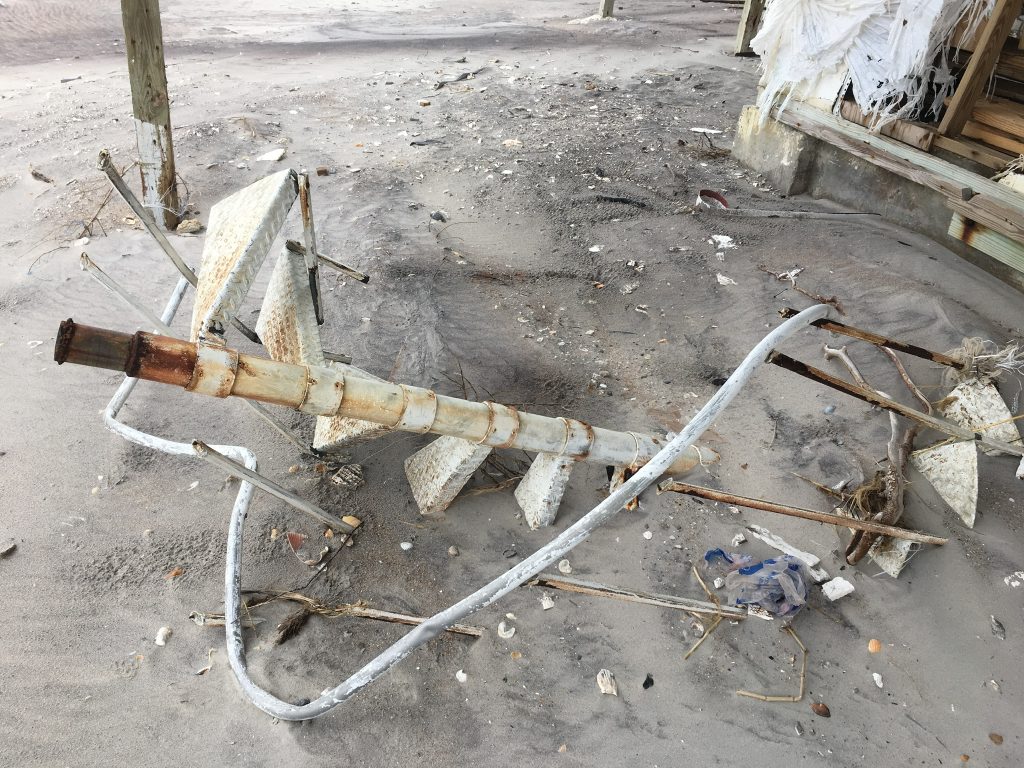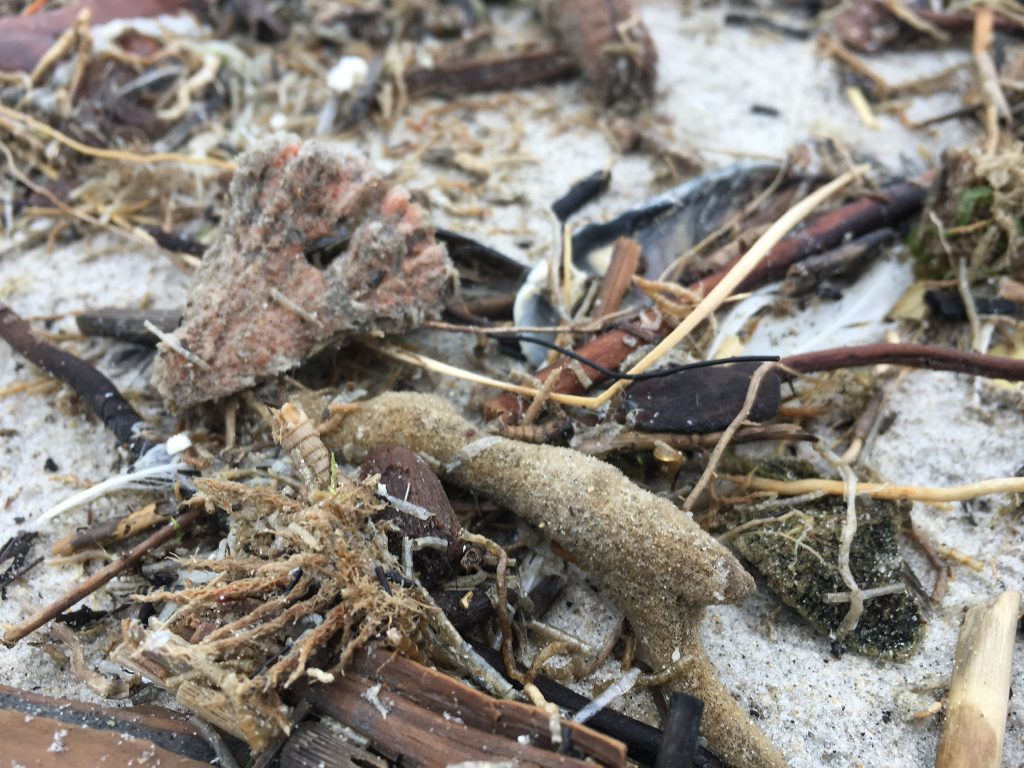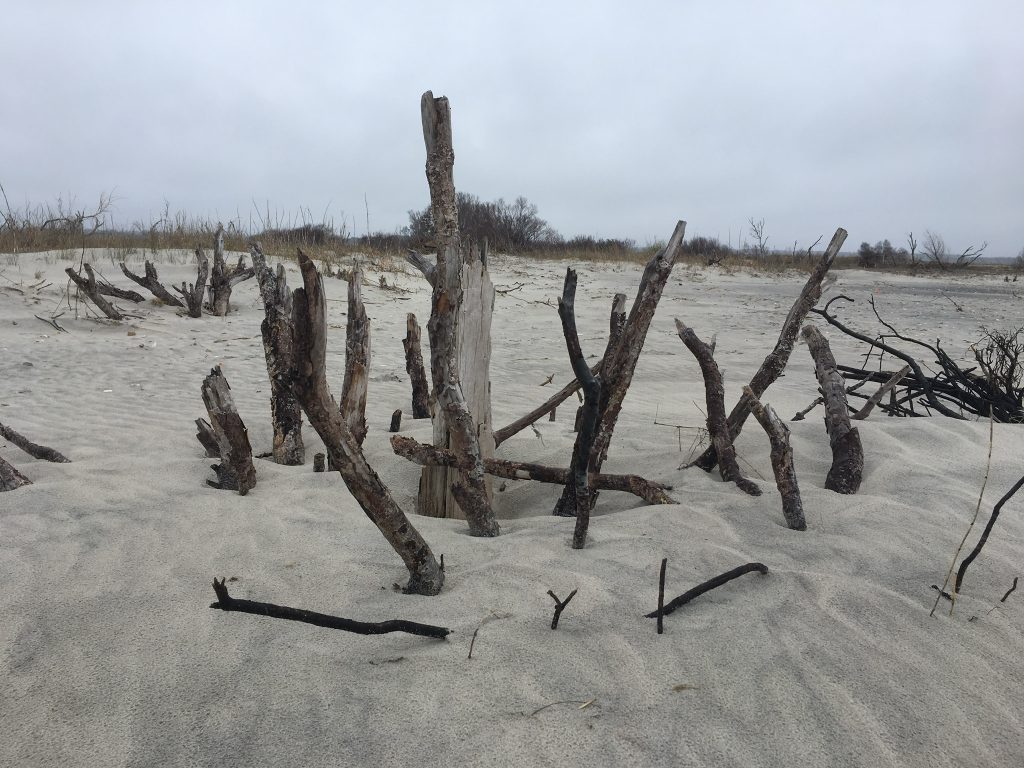When looking out over the parameter-defying sea, seasons are indistinguishable. Winter does not dull its color, sap its salt, make dormant its waves; the ocean is consistency in motion. The same cannot be said, however, for the would-be-greenery that is reduced to varying shades of grey and brown for a minimum of three months every year. I expected this much when returning to North Topsail Beach in late February; but, climbing over the ribbon of tar that stretches from Sneads Ferry to the island just East, I am met with a plethora of unforeseen change.
Roofs of shingle and tile have been wiped clean off of homes, debris lines the main road, side-streets are buried beneath inches of sand, natural dunes are replaced by loose heaps of sand… As I drive over the seemingly endless stretch of New River Inlet Road, the damage caused by Hurricane Florence grows increasingly worse—until, at last I reach the Northern most tip of the island’s coast, and pull into the sand-logged drive of my home.
I stop short of the garage, which has been demolished into a single wall and hazardous looking floor. The car door shuts behind me. I think I must have closed it. But my mind is too focused on this beacon of disaster to perceive anything else. The walls are stripped of their stucco, replaced by shivering sheets of plastic; splintered wood hangs from the building; I can see inside without the use of a window or doorway.
Walk up the stairs. Enter the threshold without needing a key; the door is off its hinges. Sand coats the floors, sticks to any remaining wall, catches somehow between my teeth. The coastal breeze follows me no matter the room I enter.
Eager to escape the pitiful ambiance of my shredded home, I make my way downstairs, and drop down from the newly made ledge that has formed between the “ground level” of my house and the actual ground now inches below. I pass what was once a spiral staircase, its metal now warped and jagged, sticking out at odd angles, looking like the mangled bones of months-old road kill, left to be picked over by flies and bleached by the sun. My feet guide me to the shore, move robotically one after the other, in search of the typical sanctuary granted to me by a journey even father North—into the undeveloped regions of Topsail Beach.

After just a few minutes of walking, I am beyond the houses, but not beyond human interference. The ground crackles and pops as I watch a silver jeep pulverize shells into fragmented versions of themselves. The wide rubber tires are only speeding up the natural process by which sand is created, but the sound is unnatural, uncaring, unable to equate to the ancient handiwork of strong winds and choppy waves. Looking down, I cannot help but notice the sheer amount of debris that should not be here—not solely man-made, but natural as well: furry sea sponge, translucent seaweed, fractured segments of a horseshoe crab—elements of the sea that ought not grace land.

I walk further. Past the driving limits. Past the bird sanctuary. Past the final littering of misplaced building components. Until I stand among a field of dead sea grass, broken trees, and icy, lifeless water. There is no escaping this storm.

With global warming to blame for hurricanes becoming more frequent and intense, the side effects of erosion have become increasingly apparent. A mile down the road from my house, at a complex called The Reef, is where it began. The ocean crept nearer, nearer, until it was not simply a creep but a thrashing demand to be seen. To prevent the tide from roaring beneath the buildings’ infrastructure, 20 feet worth of sandbags were stacked up tall in 2014, only for the rushing waters to escape under neighboring homes. One beach restoration project after the next called for more sandbags, more sandbags, more sandbags and nothing more. So the sea traveled with them, until a problem one mile South was suddenly (and literally) banging at my door.
There are now plans to install a terminal groin, should funding prevail. A Facebook group called “Save North End” holds out hope. I am a part of it. But the sea is on a new course. The winter cannot change it, and neither can we.